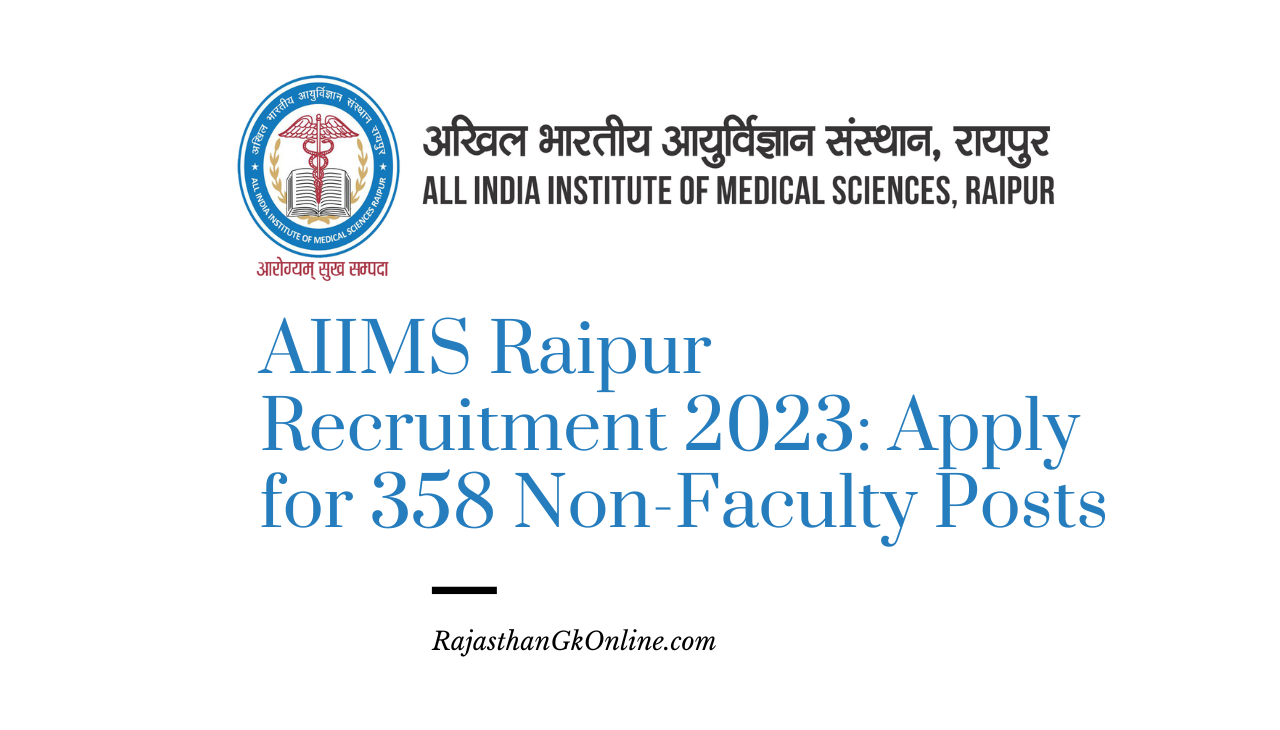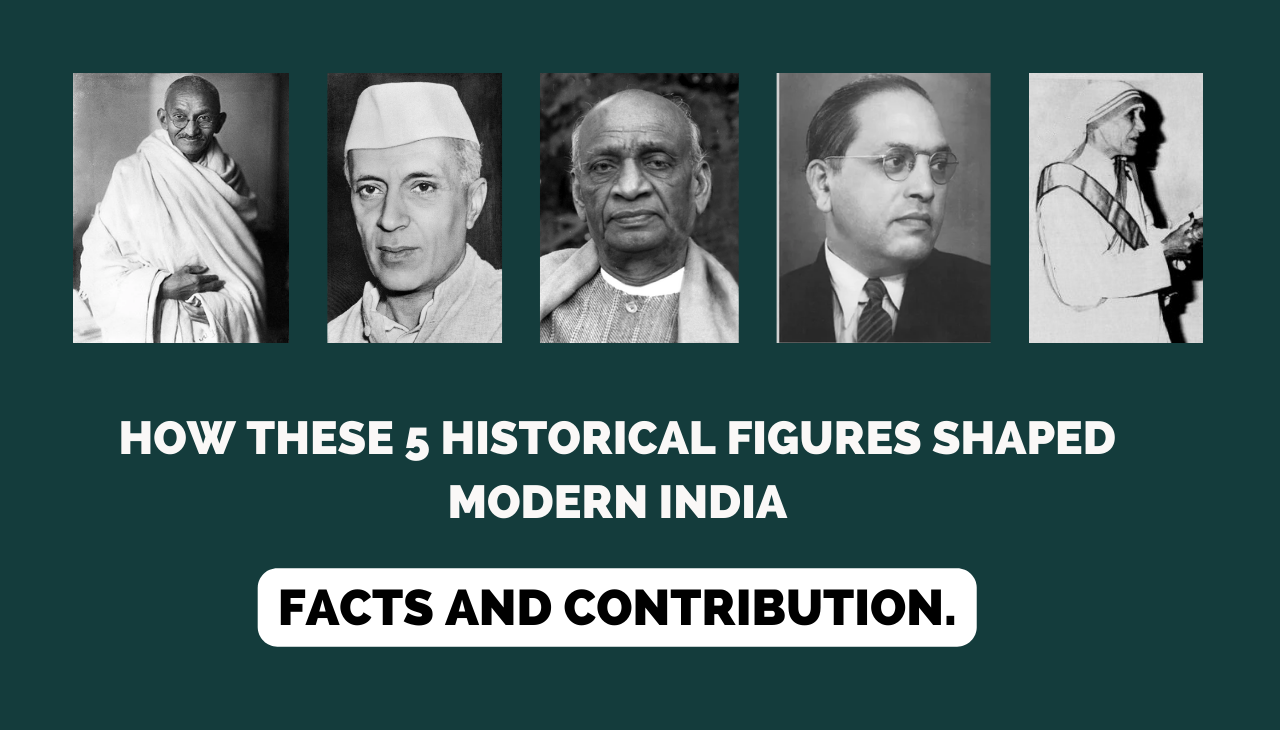Learn about the contributions of Mahatma Gandhi, Jawaharlal Nehru, Sardar Vallabhbhai Patel, Dr. B. R. Ambedkar, and Mother Teresa to the modern Indian state. These figures fought for independence, social justice, and equality, and their work continues to inspire people around the world.
Contributions of Important Historical Figures in India– Rajasthan GK
India has a long and rich history, and it has been home to many important historical figures who have made significant contributions to the country. These figures have come from all walks of life, and they have made their mark in a variety of fields, including politics, religion, social reform, science, and the arts.
In this article, we will discuss the contributions of five important historical figures in India: Mahatma Gandhi, Jawaharlal Nehru, Sardar Vallabhbhai Patel, Dr. B. R. Ambedkar, and Mother Teresa. These figures represent a diverse range of backgrounds and experiences, but they all share a common commitment to making India a better place.
Mahatma Gandhi

Mahatma Gandhi is considered the “Father of India” for his role in leading the country to independence from British rule. He was a champion of non-violence and social justice, and his teachings continue to inspire people around the world.
Gandhi was born in Porbandar, Gujarat, in 1869. He studied law in London and then returned to India to practice law. In 1893, he went to South Africa to represent a Muslim client in a court case. While in South Africa, Gandhi became involved in the struggle of Indian immigrants against racial discrimination. He organized protests and strikes, and he also developed the philosophy of non-violence that he would later use to lead the independence movement in India.
In 1915, Gandhi returned to India and began to work for independence. He organized protests and strikes, and he also led boycotts of British goods. In 1930, he led the Salt March, a major protest against the British salt monopoly. Gandhi was arrested and imprisoned several times, but he continued to fight for independence.
In 1947, India finally gained independence from Britain. Gandhi was disappointed that the British Indian Empire was partitioned into two dominions, India and Pakistan, and he worked to help the millions of people who were displaced by the partition. He was assassinated in 1948 by a Hindu extremist.
Gandhi’s legacy is immense. He is considered one of the most important figures in Indian history, and his philosophy of non-violence has inspired people around the world. He is also credited with helping to shape the modern Indian constitution, which guarantees the rights of all citizens, regardless of religion, caste, or gender.
Jawaharlal Nehru

Jawaharlal Nehru was the first Prime Minister of India and a leading figure in the Indian independence movement. He was a strong advocate for secularism and socialism, and his policies helped to shape the modern Indian state.
Nehru was born in Allahabad, Uttar Pradesh, in 1889. He was the son of Motilal Nehru, a prominent lawyer and politician. Nehru studied law in England and then returned to India to practice law. He also became involved in the independence movement, and he was imprisoned several times by the British.
In 1947, Nehru became the first Prime Minister of India. He served as Prime Minister for 17 years, and he played a key role in shaping the country’s policies. Nehru was a strong advocate for secularism, and he worked to ensure that all religious groups were treated equally in India. He was also a proponent of socialism, and he implemented a number of socialist policies, such as land reform and nationalization of industries.
Nehru’s legacy is immense. He is considered one of the most important figures in Indian history, and his policies helped to shape the modern Indian state. He is also credited with helping to promote peace and understanding between India and other countries.
Sardar Vallabhbhai Patel

Sardar Vallabhbhai Patel was known as the “Iron Man of India” for his role in uniting the country’s princely states after independence. He was also a key figure in the development of the Indian administrative and legal systems.
Patel was born in Nadiad, Gujarat, in 1875. He studied law in England and then returned to India to practice law. He also became involved in the independence movement, and he was imprisoned several times by the British.
In 1947, Patel was appointed Home Minister of India. He was responsible for integrating the country’s princely states into the Indian Union. He used a combination of persuasion and force to achieve this goal, and he was successful in uniting all but three of the princely states.
Patel was also a key figure in the development of the Indian administrative and legal systems. He helped to create the Indian Civil Service and the Indian Police Service, and he also played a role in drafting the Indian constitution.
Sure, here is the rest of the article:
Dr. B. R. Ambedkar

Dr. B. R. Ambedkar was a social reformer and the architect of the Indian Constitution. He fought for the rights of Dalits (formerly known as “untouchables”) and other marginalized groups, and his work helped to shape the modern Indian social order.
Ambedkar was born in Mhow, Madhya Pradesh, in 1891. He was born into a family of Mahar caste, which was considered “untouchable” in the Hindu caste system. Ambedkar studied law in England and then returned to India to practice law. He also became involved in the social reform movement, and he worked to improve the conditions of Dalits and other marginalized groups.
In 1947, Ambedkar was appointed Law Minister of India. He was responsible for drafting the Indian constitution, and he ensured that the constitution guaranteed the rights of all citizens, regardless of religion, caste, or gender. Ambedkar also played a key role in the development of the Indian education system.
Ambedkar’s legacy is immense. He is considered one of the most important figures in Indian history, and his work helped to shape the modern Indian social order. He is also credited with helping to improve the lives of millions of Dalits and other marginalized groups.
Mother Teresa

Mother Teresa was a Catholic nun who dedicated her life to helping the poor and sick in Kolkata. She founded the Missionaries of Charity, a religious congregation that provides care for people in need all over the world.
Mother Teresa was born in Skopje, Ottoman Empire (now North Macedonia), in 1910. She joined the Sisters of Loreto in 1928 and was sent to India to teach. In 1946, she had a vision that led her to dedicate her life to helping the poor and sick. She founded the Missionaries of Charity in 1950, and the congregation quickly grew to provide care for people in need all over India.
Mother Teresa’s work was recognized around the world, and she was awarded the Nobel Peace Prize in 1979. She died in Kolkata in 1997.
Mother Teresa’s legacy is immense. She is considered one of the most important figures in modern history, and her work has inspired people around the world to help others. She is also credited with helping to improve the lives of millions of people in need.
Have a look at the fact chart table of the five historical figures we discussed:
| Historical Figure | Birthdate | Death Date | Occupation | Major Accomplishments |
|---|---|---|---|---|
| Mahatma Gandhi | 2 October 1869 | 30 January 1948 | Lawyer, anti-colonial nationalist, and civil rights activist | Led the Indian independence movement against British rule using nonviolent resistance |
| Jawaharlal Nehru | 14 November 1889 | 27 May 1964 | Lawyer, politician, and statesman | Served as the first Prime Minister of India from 1947 to 1964 |
| Sardar Vallabhbhai Patel | 31 October 1875 | 15 December 1950 | Lawyer, politician, and statesman | Helped to unite the princely states of India after independence |
| Dr. B. R. Ambedkar | 14 April 1891 | 6 December 1956 | Lawyer, economist, politician, and social reformer | Fought for the rights of Dalits (formerly known as “untouchables”) and other marginalized groups |
| Mother Teresa | 26 August 1910 | 5 September 1997 | Nun and missionary | Founded the Missionaries of Charity, a religious congregation that provides care for people in need all over the world |
Conclusion
The five historical figures discussed in this article have all made significant contributions to India. They have come from different backgrounds and experiences, but they all share a common commitment to making India a better place.
Mahatma Gandhi, Jawaharlal Nehru, Sardar Vallabhbhai Patel, Dr. B. R. Ambedkar, and Mother Teresa all played a key role in shaping the modern Indian state. They fought for independence, social justice, and equality. They also worked to improve the lives of millions of Indians.
Their legacy continues to inspire people around the world. Their work shows that it is possible to make a difference, even in the face of great challenges. It also shows that people from all walks of life can come together to create a better future.
The article is important for aspirants because it provides an overview of the history of India and the challenges that the country has faced. It also shows how these challenges have been overcome by the work of these important figures.
The article is also inspiring because it shows how individuals can make a difference in the world. The figures discussed in the article were all ordinary people who made extraordinary contributions. They show that anyone can make a difference, no matter how small.
I hope you enjoyed this article on the contributions of important historical figures in India. If you have any questions or feedback, please feel free to leave a comment below.
For more such content feel free to check our website. we post content related to Government job vacancies and information related to preparation.
Admit Card Current Affairs History Indian Polity Mock Test Rajasthan job vacancy RAS application Form RAS Bharti RAS Recruitment 2023 Result Vacancy Yojana
-
Akshaya Tritiya 2023: Date, History, Significance, and Celebrations
Discover the history and mythology behind Akshaya Tritiya, one of the most significant Hindu festivals celebrated across India. Learn about the traditions, significance, and celebrations of Akshaya Tritiya in 2023. Akshaya Tritiya, also known as Akha Teej, is a highly auspicious Hindu festival celebrated every year in the month of Vaisakha. This year, the festival…
-
The Founding Fathers and the Creation of the U.S. Constitution
Uncover the captivating story of America’s Founding Fathers and the creation of the U.S. Constitution. Explore the lives of iconic figures like Washington, Madison, and Hamilton, delve into the debates of the Constitutional Convention, and discover the enduring legacy of liberty and democracy they left behind. In the annals of American history, few documents hold…
-
The 12 Schedules of the Indian Constitution: Detailed Explanation PDF

Schedules of the Indian Constitution: The Indian Constitution is a comprehensive document that not only defines the fundamental principles of governance but also encompasses various schedules that provide additional details and guidelines. These schedules play a crucial role in shaping the functioning of the Indian government and ensuring a systematic framework for its operations. In…
-
AIIMS Raipur Recruitment 2023: Apply for 358 Non-Faculty Posts

AIIMS Raipur Recruitment 2023: Are you passionate about making a difference in the medical field? Look no further! AIIMS Raipur, one of India’s premier medical institutes, is thrilled to announce multiple job vacancies across various departments. If you’re eager to contribute your skills and expertise to a prestigious institution, this article will provide you with…

